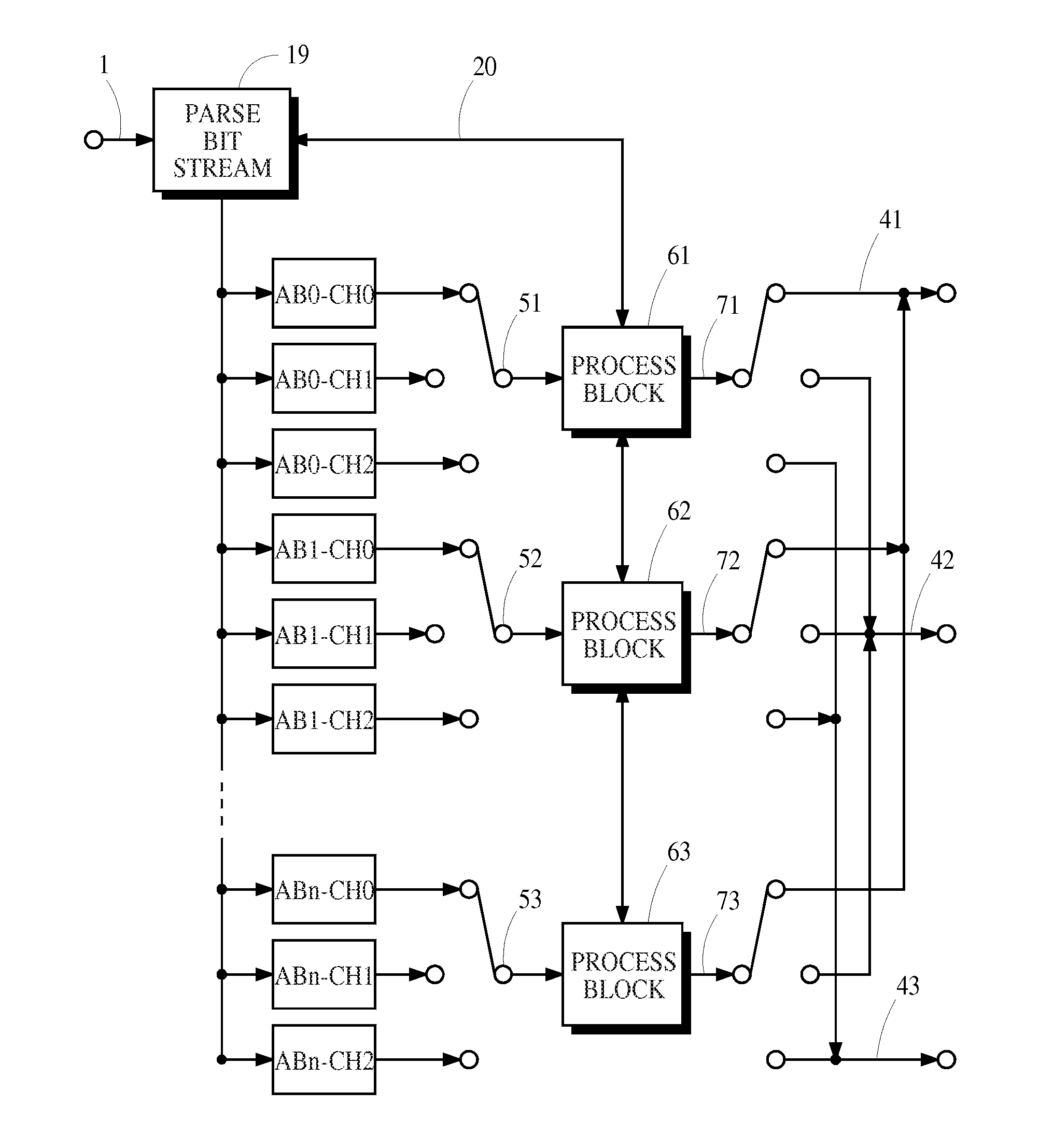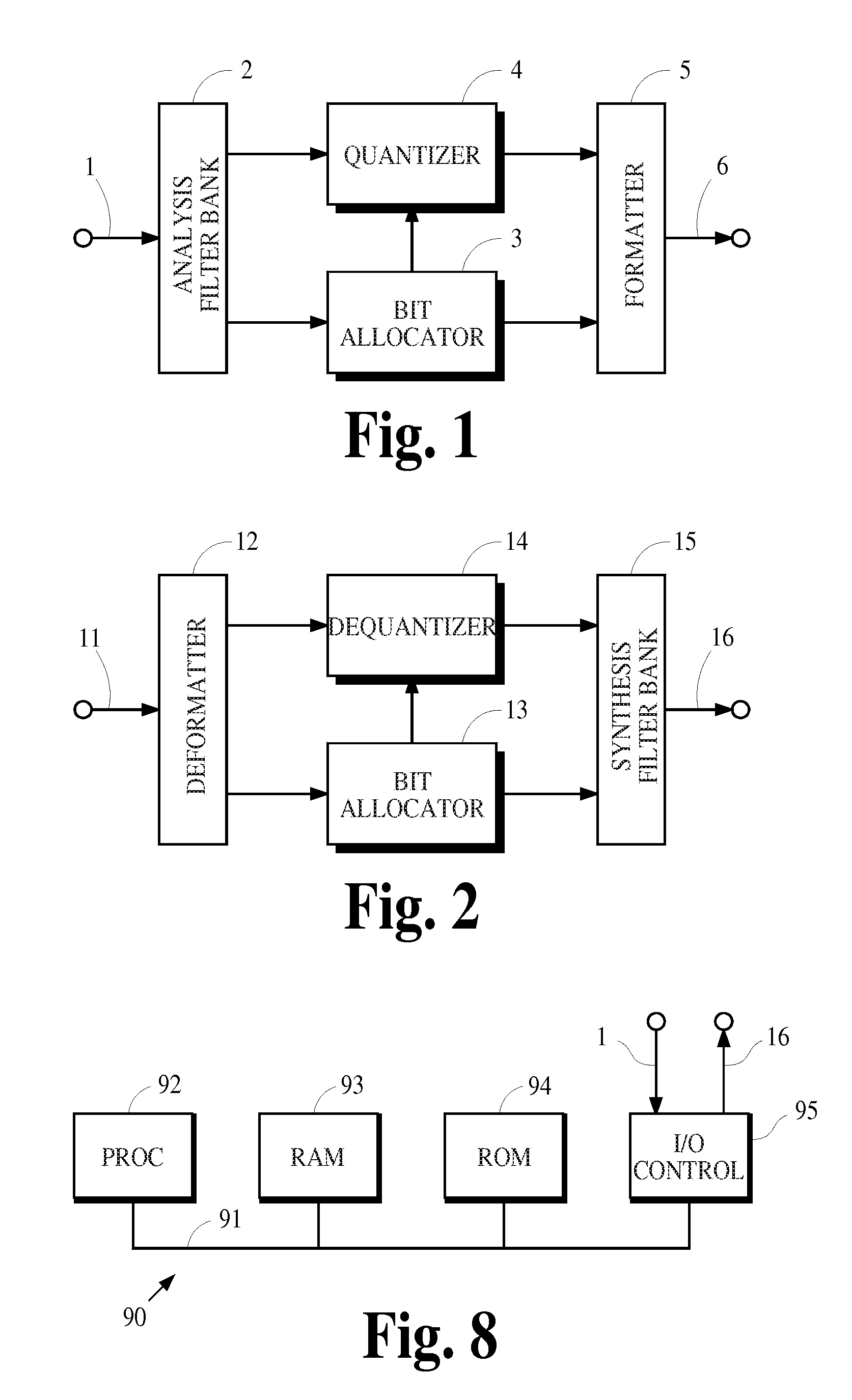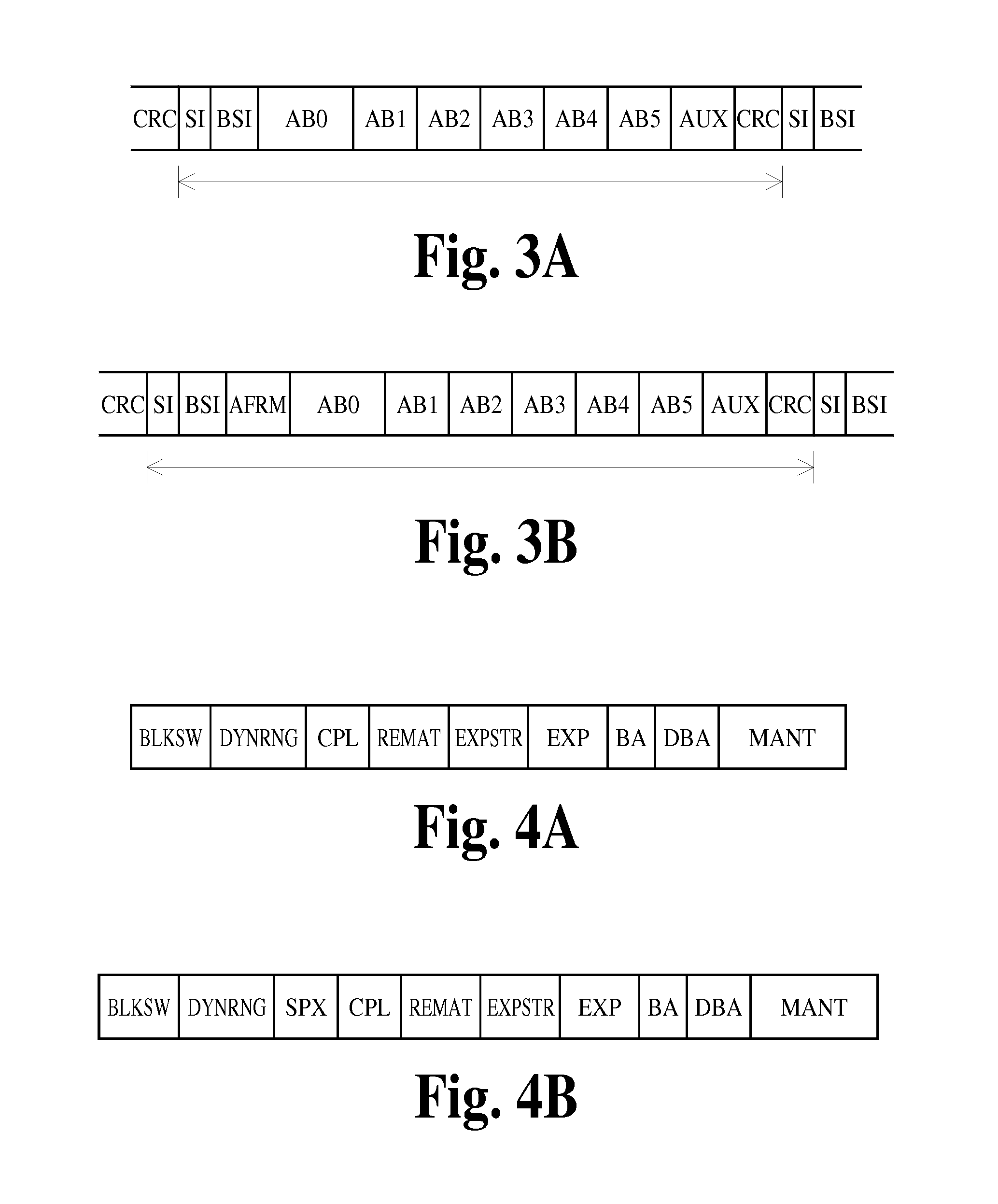Decoding of Multichannel Audio Encoded Bit Streams Using Adaptive Hybrid Transformation
a hybrid transformation and audio technology, applied in the field of audio coding systems, can solve the problems of requiring considerable computational resources to calculate the data locations, and the bit stream that complies with atsc standards can be very complex, so as to reduce the computational resources required
- Summary
- Abstract
- Description
- Claims
- Application Information
AI Technical Summary
Benefits of technology
Problems solved by technology
Method used
Image
Examples
Embodiment Construction
A. Overview of Coding System
[0020]FIGS. 1 and 2 are schematic block diagrams of exemplary implementations of an encoder and a decoder for an audio coding system in which the decoder may incorporate various aspects of the present invention. These implementations conform to what is disclosed in the A / 52B document cited above.
[0021]The purpose of the coding system is to generate an encoded representation of input audio signals that can be recorded or transmitted and subsequently decoded to produce output audio signals that sound essentially identical to the input audio signals while using a minimum amount of digital information to represent the encoded signal. Coding systems that comply with the basic ATSC Standards are capable of encoding and decoding information that can represent from one to so-called 5.1 channels of audio signals, where 5.1 is understood to mean five channels that can carry full-bandwidth signals and one channel of limited-bandwidth that is intended to carry signal...
PUM
 Login to View More
Login to View More Abstract
Description
Claims
Application Information
 Login to View More
Login to View More - R&D
- Intellectual Property
- Life Sciences
- Materials
- Tech Scout
- Unparalleled Data Quality
- Higher Quality Content
- 60% Fewer Hallucinations
Browse by: Latest US Patents, China's latest patents, Technical Efficacy Thesaurus, Application Domain, Technology Topic, Popular Technical Reports.
© 2025 PatSnap. All rights reserved.Legal|Privacy policy|Modern Slavery Act Transparency Statement|Sitemap|About US| Contact US: help@patsnap.com



